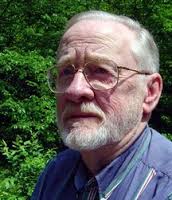
The paleontologist David M. Raup died on July 9, 2015, at the age of 82, according to a press release from the University of Chicago (July 14, 2015). The press release explains, "Raup was widely known for the new approaches he brought repeatedly to paleontology, such as extensive computation, modern evolutionary biology, theoretical ecology, and mathematical modeling." Raup was also a pedagogical innovator: Principles of Paleontology (1971, 1978), his textbook coauthored with Steven M. Stanley, focused on paleontological methods rather than adopting a systematic or historical approach. To the public, he was famous for his popular books explaining his views on periodicities in mass extinctions: The Nemesis Affair (1985) and Extinction: Bad Genes or Bad Luck? (1991).
A vivid and candid writer, Raup was often misleadingly quoted by creationists. For example, a supposedly antievolutionary phrase from a 1979 essay of his — "we have even fewer examples of evolutionary transitions than we had in Darwin's time" — is still in circulation, although in context it is clear that Raup was talking about such evolutionary transitions as driven by natural selection alone; in the same article, he writes, "This record of change pretty clearly demonstrates that evolution has occurred if we define evolution simply as change; but it does not tell us how this change took place, and that is really the question." Raup contributed a chapter on "The Geological and Paleontological Arguments of Creationism" to Laurie R. Godfrey's Scientists Confront Creationism (1984), in which he commented, "[Duane] Gish ... has popularized the notion that the rocks and the fossils say NO to evolution. As I will show here, the rocks and the fossils say YES to evolution!" Later in his life, Raup was apparently intrigued by the "intelligent design" movement, reportedly having a better opinion of Phillip Johnson's scholarship than did his colleague Stephen Jay Gould.
Raup was born in Boston on April 24, 1933. He received his B.S. from the University of Chicago in 1953 and his M.A. and Ph.D. in geology from Harvard University in 1955 and 1957. He taught at Caltech and the John Hopkins University before becoming a professor of geology at the University of Rochester from 1966 to 1978. Returning to Chicago, he was curator of geology from 1978 to 1980 and dean of science from 1980 to 1982 at the Field Museum of Natural History. He also joined the Department of the Geophysical Sciences at the University of Chicago in 1980, becoming emeritus in 1995. His honors included the Paleontological Society's Charles Schuchert Award in 1973, election to the National Academy of Sciences in 1979, and the Paleontological Society Medal in 1995.
